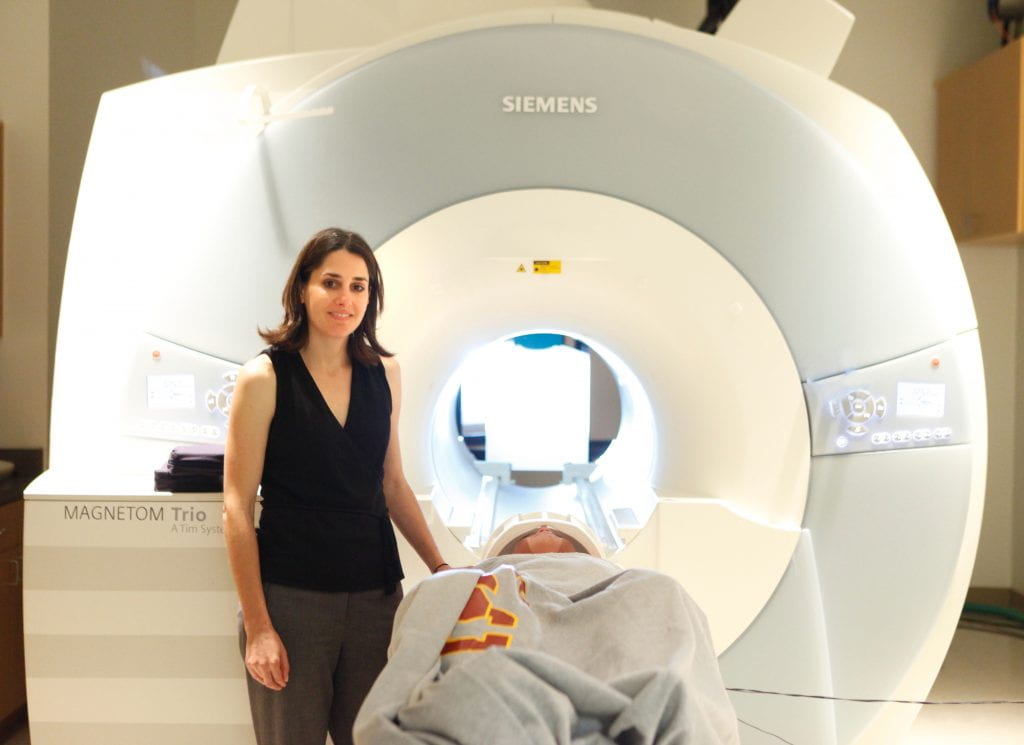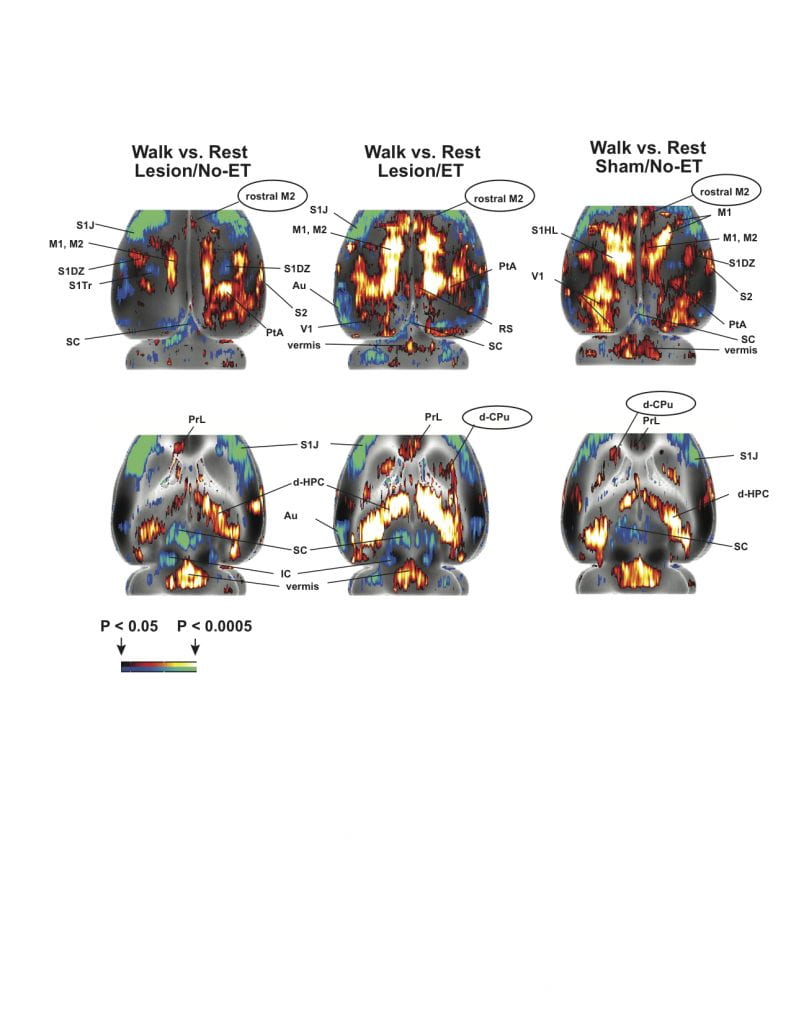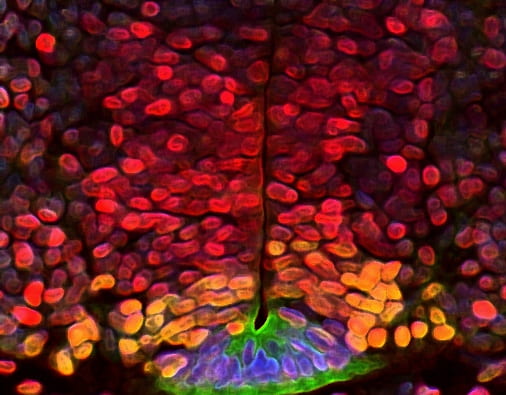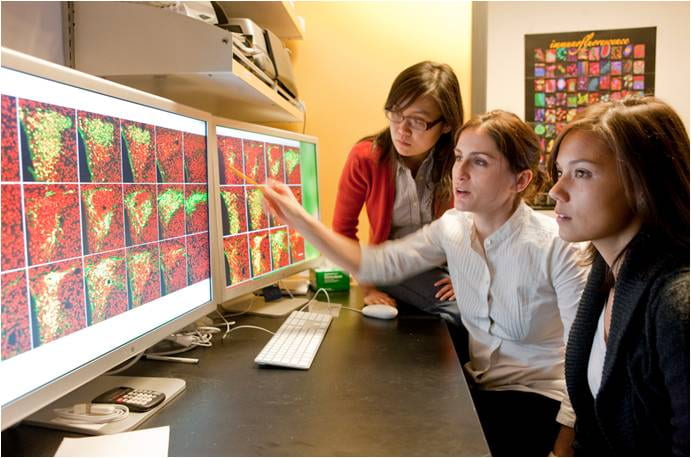By Robert Perkins USC Dornsife’s Jennifer Achiro, a neuroscience doctoral student in Sarah Bottjer’s laboratory, is first author on a songbird study that could lead to better treatment of language disorders in children. USC Dornsife scientists have discovered a population of neurons in the brains of juvenile songbirds that are necessary for allowing the birds…Continue Reading Worth Crowing About
Year: 2013
USC sponsers Young Researchers Program
The USC Young Researchers Program enables those typically underrepresented within the scientific community access to research. Through laboratory exposure and group presentations on research, this program stimulates a passion for science in both its young participants and USC mentors. The USC Neuroscience Graduate Program is a proud sponsor of the Young Researchers Program and is…Continue Reading USC sponsers Young Researchers Program
Mary Helen Immordino-Yang, assistant professor of psychology at USC Dornsife’s Brain and Creativity Institute, is particularly interested in social emotions that promote learning, motivation and resilience, such as compassion, admiration and inspiration. Photo by Steve Cohn.

Mary Helen Immordino-Yang, assistant professor of psychology at USC Dornsife’s Brain and Creativity Institute, is particularly interested in social emotions that promote learning, motivation and resilience, such as compassion, admiration and inspiration. Photo by Steve Cohn….Continue Reading Mary Helen Immordino-Yang, assistant professor of psychology at USC Dornsife’s Brain and Creativity Institute, is particularly interested in social emotions that promote learning, motivation and resilience, such as compassion, admiration and inspiration. Photo by Steve Cohn.
Functional activation of dorsal striatum (d-CPu) and rostral secondary motor cortex (rostral M2) are attenuated after dopaminergic deafferentation of the d-CPu and are augmented by 4 weeks of exercise training (ET). (Holschneider Lab)

Functional activation of dorsal striatum (d-CPu) and rostral secondary motor cortex (rostral M2) are attenuated after dopaminergic deafferentation of the d-CPu and are augmented by 4 weeks of exercise training (ET). (Holschneider Lab)…Continue Reading Functional activation of dorsal striatum (d-CPu) and rostral secondary motor cortex (rostral M2) are attenuated after dopaminergic deafferentation of the d-CPu and are augmented by 4 weeks of exercise training (ET). (Holschneider Lab)
xE15 Motor Neuron Development: The Shh signaling pathway functions in a time- and concentration-dependent manner to specify ventral neural cell types within the developing central nervous system. (McMahon Lab)

E15 Motor Neuron Development: The Shh signaling pathway functions in a time- and concentration-dependent manner to specify ventral neural cell types within the developing central nervous system. (McMahon Lab)
…Continue Reading xE15 Motor Neuron Development: The Shh signaling pathway functions in a time- and concentration-dependent manner to specify ventral neural cell types within the developing central nervous system. (McMahon Lab)
Overview
Students and faculty in the USC Neuroscience Graduate Program come from a variety of academic backgrounds to study questions spanning the entire spectrum of modern neuroscience research. Key questions include: how do molecules work together in time and space to build functioning nerve cells? how do individual neurons and their interconnections lead to the emergent…Continue Reading Overview
Footer
USC Neuroscience Graduate Program 3641 Watt Way, HNB 120 Los Angeles, California 90089-2520 United States 213-740-8796 Fax: 213-740-5687…Continue Reading Footer
